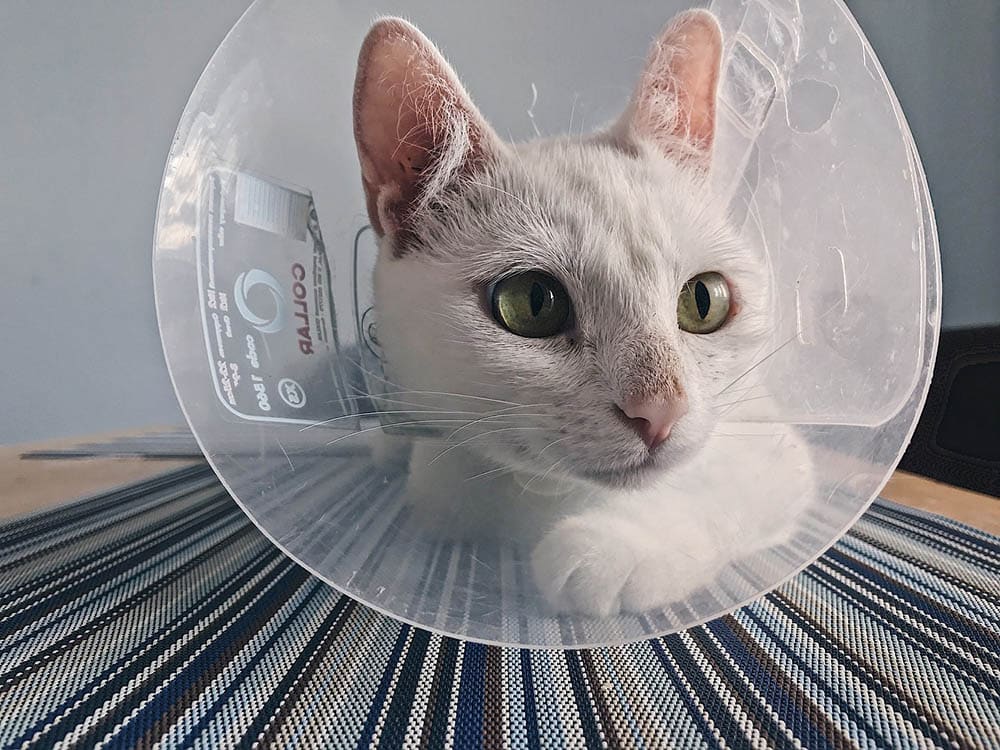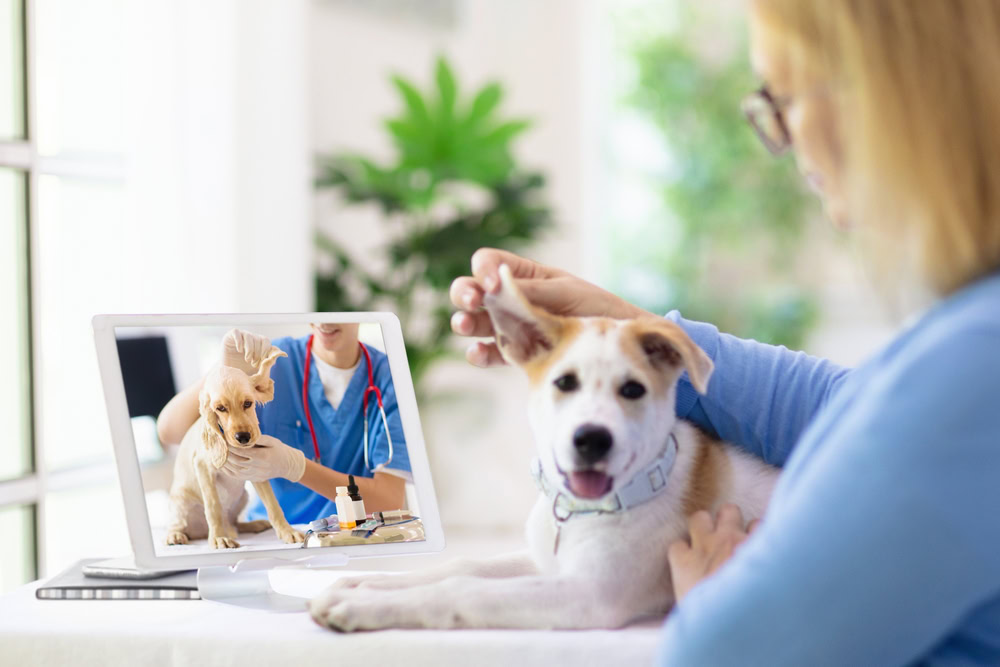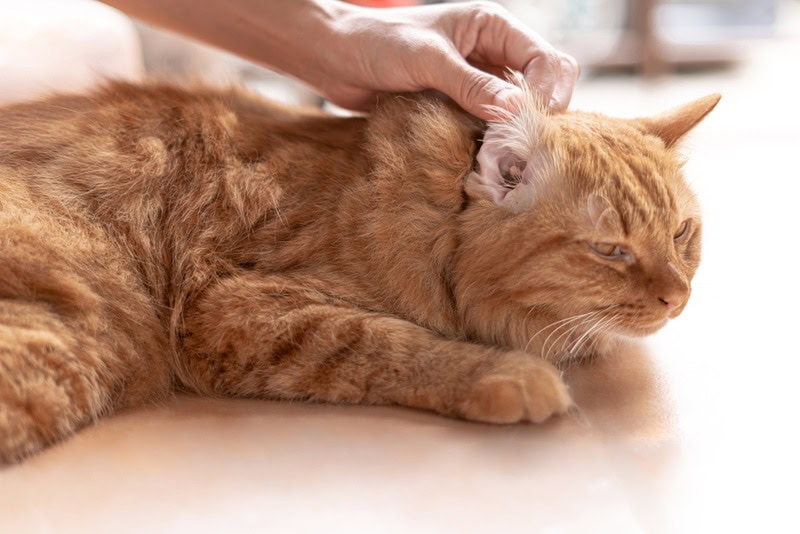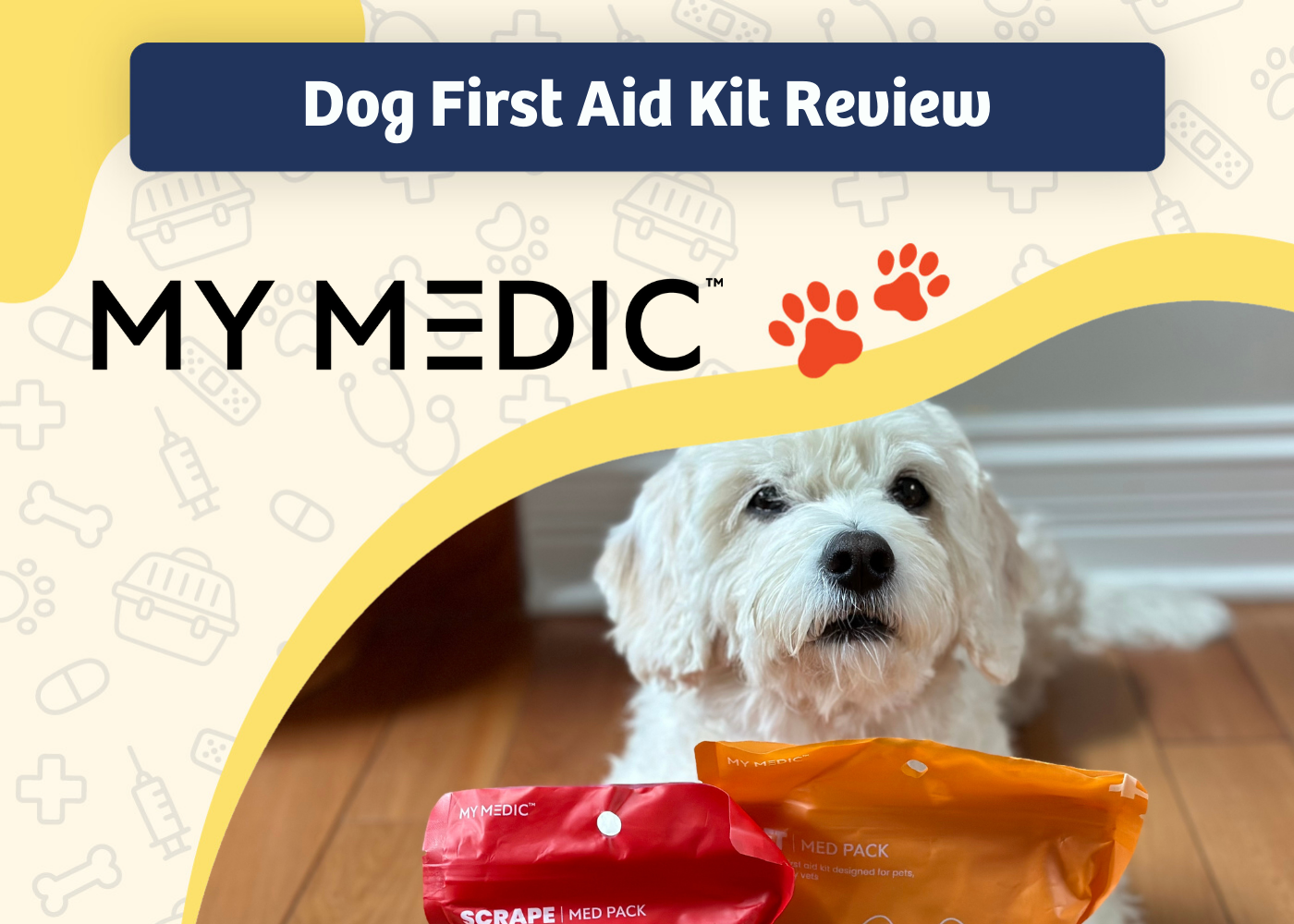VET APPROVED

The information is current and up-to-date in accordance with the latest veterinarian research.
Learn more »Cats are America’s second-favorite pets for a good reason: They make our lives more enjoyable!1 Unfortunately, like all living creatures, your kitty will likely have an accident or injury. When that happens, your veterinarian may have them wear an Elizabethan collar, also known as a cone or a protective collar, to help them heal.
A cone is incredibly helpful because it will prevent your cat from chewing, licking, or scratching at their wound or injury. It does pose one small problem, though: It can get in the way when your cat tries to eat. Fortunately, we have six great tips here that you can use to help your feline get a good meal as they heal.

The 6 Tips to Feed a Cat With a Cone
1. Elevate Your Cat’s Water and Food Bowls to Make Access Easier
While wearing a cone, your cat will likely have issues getting their mouth and tongue near their water and food. Elevating both bowls will often solve the problem, enabling your feline friend to access their bowls better while wearing the cone.
Elevating your cat’s bowls on a slight angle can also help, though you will need to stabilize them somehow or buy specially designed bowls. About 2 to 4 inches off the ground should do the trick.
2. Change Your Cat’s Water and Food Bowls to Small Saucers
A food or water bowl, being the shape that it is, can make eating and drinking difficult for your cat because the cone hits the edge. Changing their bowls to saucers can help because there is no raised edge. One caveat, however, is that you’ll need to choose saucers with a smaller diameter than the cone on your cat’s fuzzy head.
This way, when they go to eat or drink, the saucer will fit inside the cone and not get in the way. Keep in mind that it might take a few tries for your cat to get used to this temporary eating arrangement. Any help that you can give will be appreciated by your pet as they heal.
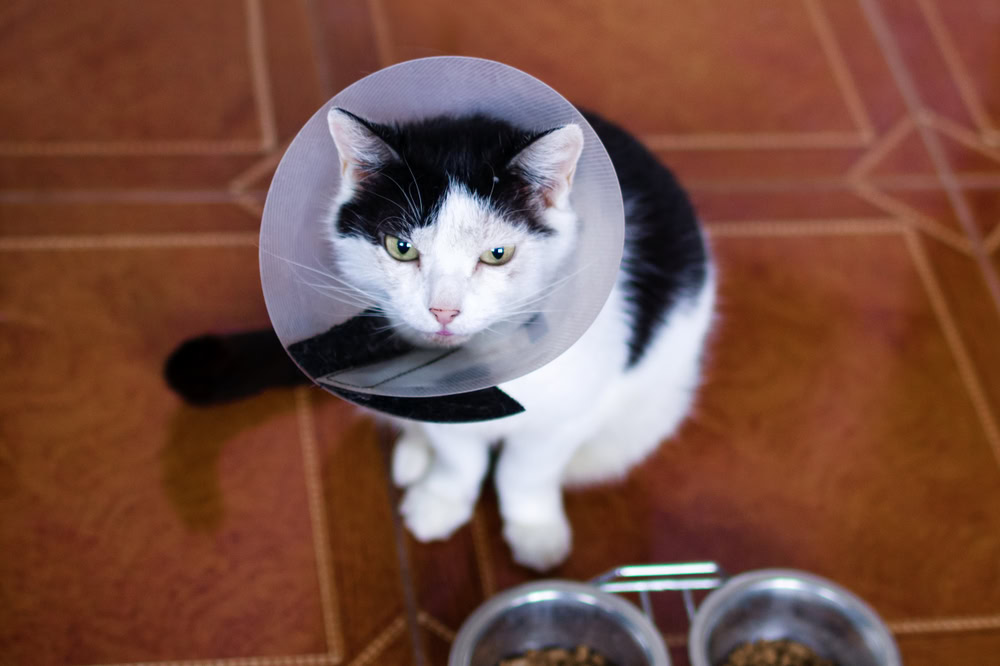
3. Use a Different Type of Cone
If your cat has never needed a cone before, you might not know that there are several different kinds, including hard plastic ones and ones made from soft materials, including nylon. Some cones are flexible, making it easier for your cat to move around and eat while wearing them. There are even small cat cones specifically for kittens that are made with soft, lightweight PVC with padding around the edges.
It might take a bit of experimentation, but eventually, you can find a cone that empowers your cat to eat and drink comfortably while they’re healing. However, a hard, plastic cone might be the only kind that your cat can wear while recovering. You’ll need to check with your veterinarian before you purchase something different than the cone given to your cat at the clinic.
4. Feed Your Cat by Hand While They’re Wearing the Cone
If you have the time and energy, consider feeding your cat by hand while they’re wearing a cone. This task can be messy, especially if your cat is used to eating wet food rather than dry. In that case, a spoon and lots of patience will be necessary.
As for water, holding your cat’s water bowl under their mouth while they drink is ideal. The good news is that after a few days, your cat should be able to eat and drink on their own while wearing the cone.
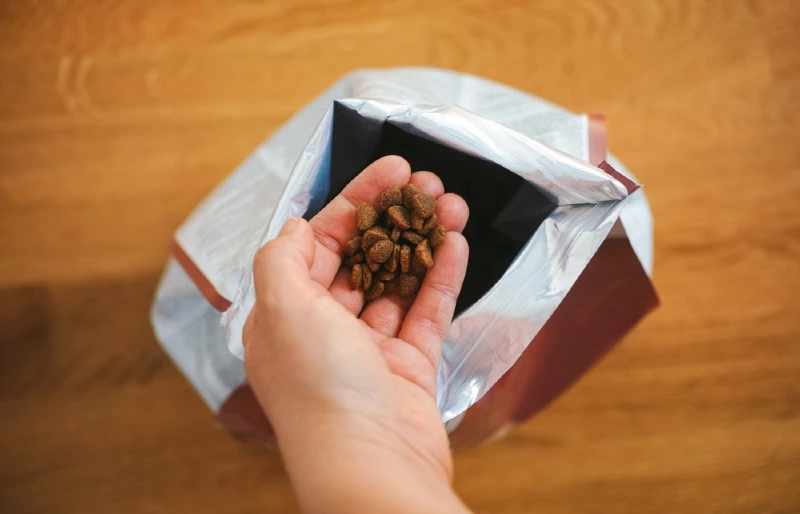
5. Remove Your Cat’s Cone Temporarily
Removing your cat’s cone while they eat is a possible option if nothing else seems to work. You should know, however, that it might be difficult to put the cone back on in the correct position. Also, you’ll need to supervise your cat while they eat to ensure that they don’t start licking, scratching, or otherwise messing with their wound or injury.
In some cases, your cat might have a condition, issue, or injury that prevents you from removing the cone. Talk to your vet first to ensure that it’s okay and won’t cause any additional problems for your kitty. The last thing that you want is to try to help your cat and hurt them more instead.
6. Use an Inflatable Cone on Your Cat
Inflatable cones look more like donuts than cones and often come with various decorations. As the name suggests, you inflate the cone and place it over your cat’s neck. Since it’s shaped like a donut, there’s no edge to hit their water or food bowl, making it much easier for your cat to eat and drink.
However, before purchasing an inflatable cone, you should contact your veterinarian and ensure that it’s fine to do so based on your cat’s specific injury.
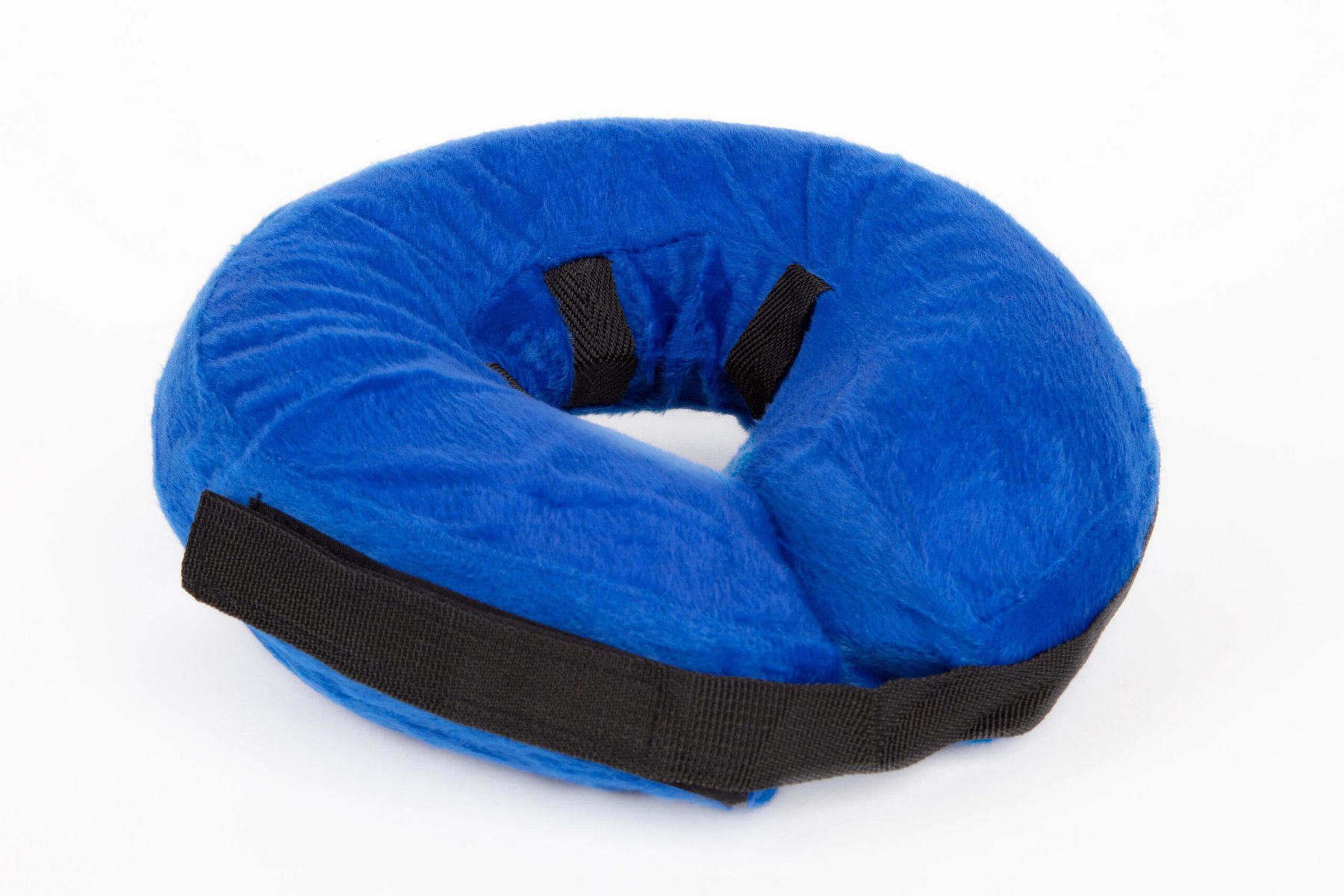

Can Cats Sleep While Wearing a Cone?
It’s normal to worry that your cat might have problems sleeping while wearing a cone, since it’s rather large and bulky. However, millions of cats have slept, eaten, gone potty, and performed other daily activities while wearing a cone, with few problems.
It is certainly uncomfortable, and your cat will likely hate theirs, but besides being problematic when it comes to eating, most other activities shouldn’t be a problem.
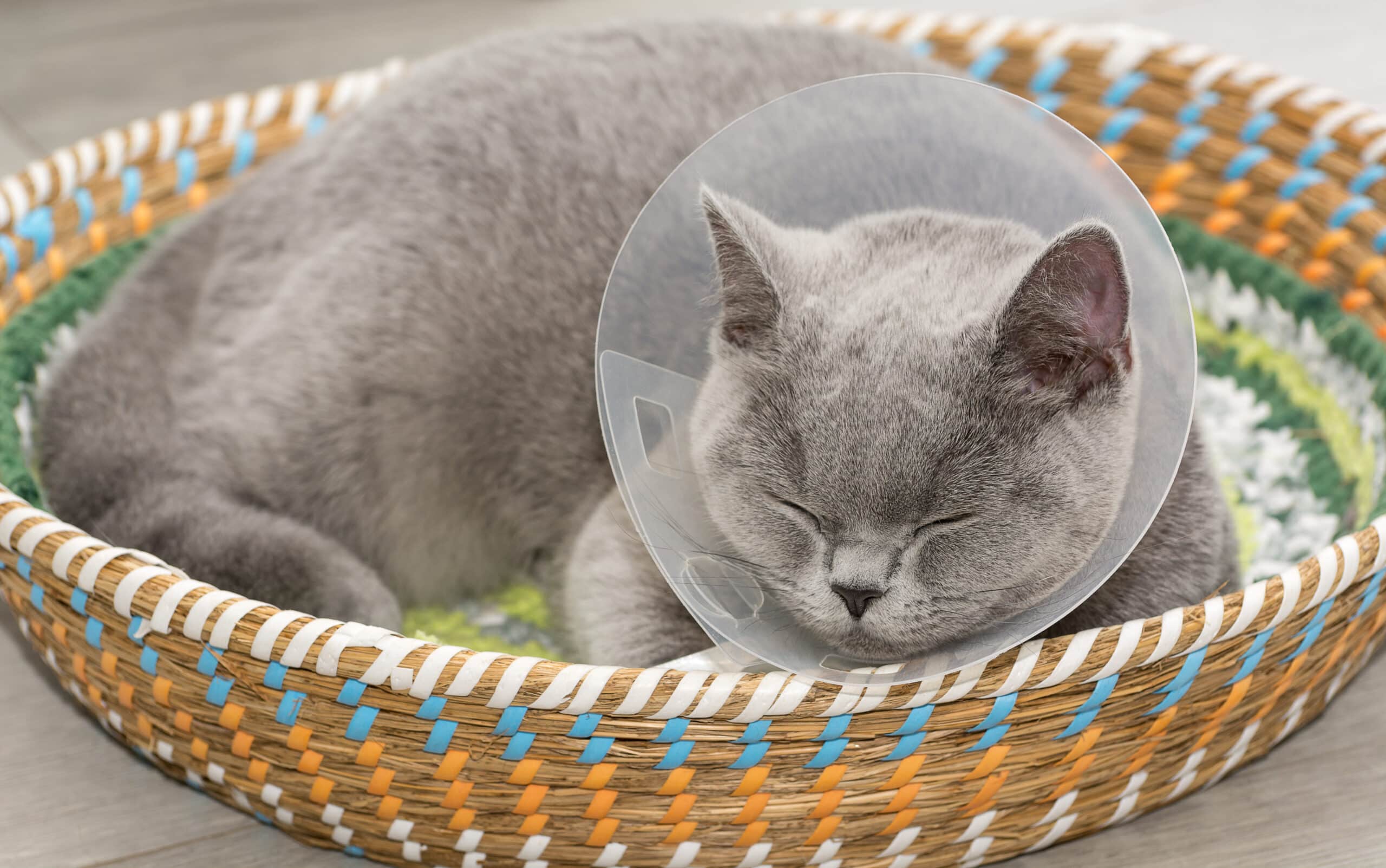
Should You Leave a Cat Alone While They’re Wearing a Cone?
While not inherently dangerous, cat cones do pose several issues that you should preemptively address. One is whether you should leave your cat alone while they’re wearing a cone. Veterinarians recommend that you don’t or that you only leave them alone for short periods. That way, your cat won’t have enough time to figure out how to take off the cone and reinjure themselves. Using a pet-monitoring camera can also be a great way to keep an eye on them regularly.
If you don’t have a choice, it’s highly recommended that when you leave your cat alone while they’re wearing a cone, you put them in a room where there are very few objects that they can knock over. Unfortunately, even though cats are incredibly nimble and flexible, wearing a cone turns them into clumsy fur balls. Removing anything that they can knock over will keep your cat from destroying items and hurting themselves.
If you still have questions about making your cat comfortable while wearing a cone, you should consult a vet. They can provide additional tips and guidance to ensure your cat has the best healing journey possible.

Final Thoughts
An Elizabethan collar, or cat cone, can make the difference between your cat recovering in a few days or re-injuring themselves constantly and needing more time to heal. The problem is that cones can get in the way of your cat eating food and drinking water.
Hopefully, the great tips here will help your cat eat and drink with few issues and get the nutrition that they need to recover quickly. While your cat might hate the cone, ensuring that they can stay hydrated and fed while wearing it correctly is essential. The faster your cat can adapt to the cone, the faster they will heal and get rid of the silly thing for good.
Featured Image Credit: Pixabay
Contents
- The 6 Tips to Feed a Cat With a Cone
- 1. Elevate Your Cat’s Water and Food Bowls to Make Access Easier
- 2. Change Your Cat’s Water and Food Bowls to Small Saucers
- 3. Use a Different Type of Cone
- 4. Feed Your Cat by Hand While They’re Wearing the Cone
- 5. Remove Your Cat’s Cone Temporarily
- 6. Use an Inflatable Cone on Your Cat
- Can Cats Sleep While Wearing a Cone?
- Should You Leave a Cat Alone While They’re Wearing a Cone?
- Final Thoughts
